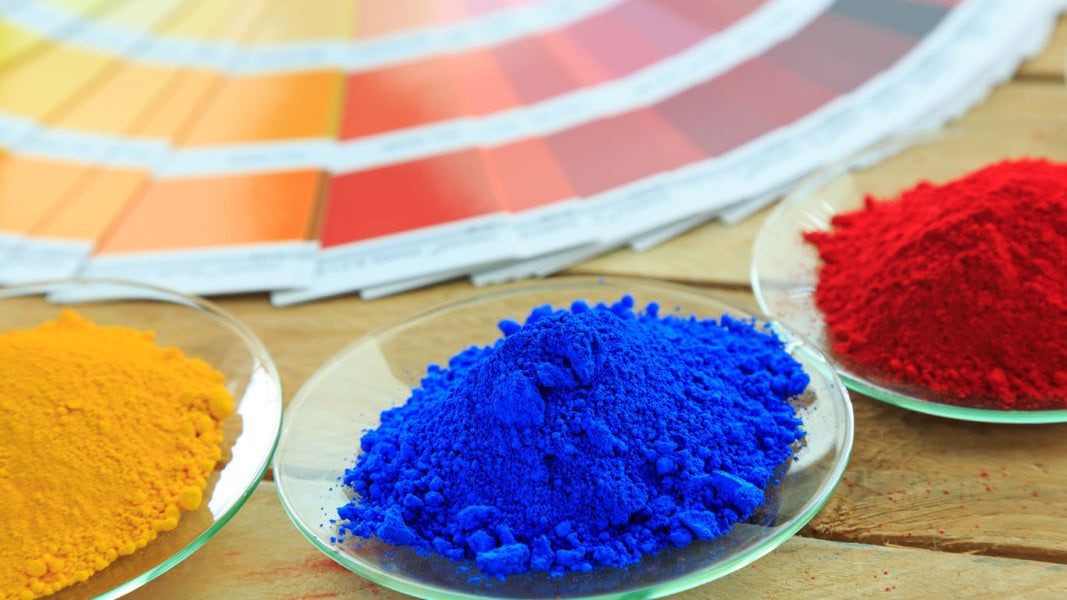To ensure the powder coating adheres to the workpiece, various charging systems are used. The most common charging types in powder coating are:
- C/Corona charging (electrostatic or ionization) (high voltage)
- Tribocharging (triboelectric or electrokinetic) (friction)
When which system should best be used depends on the application and the user's requirements for the coating.
- Corona charging
Ionization charging, or corona charging, is technically defined as the release of free electrons from an electrical conductor. In powder coating, the electrical voltage is generated via the high-voltage (HV) cascade built into the powder gun. The voltage (30 to 100 kV and max. 100 µA) is delivered to the flowing powder-air mixture via the needle electrode located at the gun outlet, thereby ionizing the air surrounding the powder coating particles. To ensure optimal and constant charging of the powder, the needle electrode is purged by a small air stream. Without this air purge, the powder would sinter ("stick") to the electrode, and the electron flow would be significantly disrupted.

Figure 1 - Schematic representation of a corona gun
When the gun exits the gun, a powder cloud is created and the ionized air (in the form of electrons) attaches to the powder particle surface. Of the free electrons, 1-3% strike the powder particles, the rest ionizes in the ambient air or remains free, collectively known as the space charge. The ionized powder particles, like the free, ionized air particles, are attracted to all grounded objects. In practice, the workpiece is the first grounded part the powder particles strike, and they adhere to it, creating a countercharge. Because the powder is electrically non-conductive, the charge cannot dissipate, and the attractive force remains until the curing process. The current flowing out of the grounded workpiece consists of the impacting free electrons, "air ions," and the countercharge's influence. The influence charge (backspray effects), which differently attract and repel newly arriving powder, causes irregular powder distribution and an orange peel effect (see Low-Ion Charging).
Air velocity also has a significant impact on coating quality. Air primarily transports the powder from the powder container to the gun, via the nozzle to the object. High air velocities can help increase penetration depth, but they also increase the tendency for blow-off. Therefore, combining the correct charging with the appropriate air velocity is crucial for optimal results.
Low-ion charging
Retrofittable attachments, such as grounded metal rings or metal tips on the coating device, reduce the number of free electrons (space charge) reaching the workpiece. With conventional electrostatic coating, it is not always possible to achieve a high surface quality when recesses need to be covered and the leading edges must be smooth at the same time. In the worst case, even with low layer thicknesses, 60 – 70
Our RAL powder coatings, in particular, can be easily processed with both systems. Visit our shop section and find your favorite color!
- Tribocharging
In the tribo process, the powder coating is charged via friction in the powder tube; there is no high-voltage supply. Therefore, the powder tube of a tribo gun, for example, is longer, usually coated with Teflon on the inside, and designed with an annular gap or spiral to maximize the contact surface. The powder particles are guided through the spiral-shaped powder tube, releasing electrons to the surface of the inner tube. The excess electrons are absorbed by the metal outer tube and discharged via the inlet piece and gun cable. Due to the "loss" of electrons, the powder exits the gun positively charged. To monitor and measure the powder charge, the leakage current is fed to the control unit and measured there. This essentially results in a smaller number of free electrons or "air ions" in the powder cloud. Compared to corona charging, the space charge is therefore significantly reduced, which gives tribo charging a fundamental advantage in terms of surface quality.

Figure 2 – Schematic representation of a tribo gun
The tribo-gun process requires a higher air velocity to create more turbulence in the inner tube. This increases the number of contacts between powder particles and creates a higher charge. The speed of the conveying air (from the container through the gun to the outlet) is usually not sufficient to generate the required charge on the powder, so the powder passage velocity is increased with additional air. This makes it more difficult to regulate the desired charge on the powder, reducing flexibility and increasing the complexity of operation.
List of sources
Text : Judith Pietschmann (2013). Industrial Powder Coating: Fundamentals, Processes, and Practical Applications. 4th, revised and expanded edition. Wiesbaden: Springer Verlag. pp. 61-67.
Photo: Powder coating (2021): Wikipedia. Permanent URL: https://de.wikipedia.org/wiki/Pulverbeschichten. Accessed: January 30, 2022.
Graphics: Own illustration.




